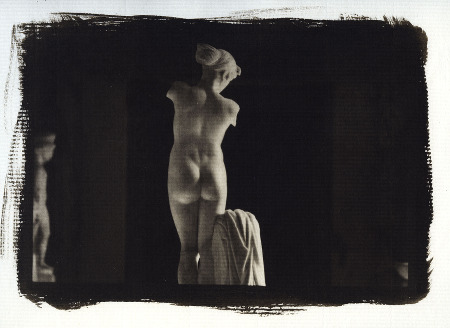Synchronicity: the encounter between the psychoanalyst Jung and the physicist Pauli
Abstract from the ebook “L’esperienza psicologica della sincronicità verso l’entanglement quantistico” https://www.atopon.it/ebooks/
Who Was Wolfgang Pauli?
Wolfgang Pauli (1900-1958) was a most critical theoretical physicist with profound insight as well as a deep thinker. In very young age he demonstrated his brilliant characteristics when in he handed a manuscript on the theory of relativity, which was published by the Enzyklopadie mathematischen der Wissenschaften, generating in Albert Einstein the following comment:
Who ever studies this mature and grandly composed word would not believe that the author is a man of twenty-one. One does not know what to admire moste: the psychological understanding of the evolution of ideas, the accuracy of the mathematical deduction, the deep physical insight, the capacity for lucid systematic presentation, the knowledge of literature, the factual completeness or the infallibility of criticism.
Einstein always held Pauli in high esteem, and in an address in 1946, on the occasion of Pauli’s Nobel prize, the old Einstein called Pauli his spiritual son.
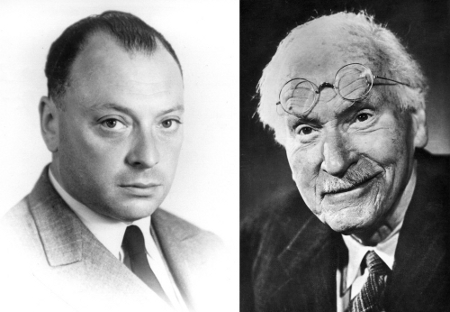 Together with Bohr, Heisenberg and Dirac, Wolfgang Pauli was on of the principal creators of quantum mechanics and soon he became renowned for his fundamental original contribution on quantum field theory and for his role of living conscience of theoretical physics.
Together with Bohr, Heisenberg and Dirac, Wolfgang Pauli was on of the principal creators of quantum mechanics and soon he became renowned for his fundamental original contribution on quantum field theory and for his role of living conscience of theoretical physics.
But the rational one-sidedness of the young Pauli received a strong blow in his early thirties, a crisis that he later described as his big neurosis. Together with stern strokes of fate (1927 –suicide of his mother, 1930 – divorce from his first wife), it was basically his excessively rational attitude which brought him into serious inner conflicts which he could not master intellectually.
Following the advice of his father he asked the psychologist Carl Gustav Jung for help. Suddenly Jung recognized the outstanding scientific training and intellectual capability of Pauli. Jung recounts:
I saw that he was clock-full of archaic material, and I said to myself “Now I am going to make an interesting experiment to get that material absolutely pure, without any influence from myself”. So I sent him to doctor Erna Rosenbaum who was then just a beginner and who did not know much about archetypal material…”
During a period of three years, about fifteen hundred dreams of Pauli have been recorded, containing an extraordinary series of archetypal images. Jung used 400 dreams out of this material for his 1935 Eranos lecture.
Pauli finished his analysis in 1934 and married again in the same year. Nevertheless, Jung found his dreams so important that he asked Pauli to continue recording and interpreting his dreams and to stay in contact with him. When the Second World War began, he was not yet a Swiss citizen and got leave-of-absence in order to join the Institute for Advanced Studies in Princeton. For five years he was in contact with Einstein, Kurt Godel and Bertrand Russel and in 1945 Pauli received the Nobel prize for the exclusion principle. One year later he returned to Zurich and stayed there for the rest of his life, until 1958.
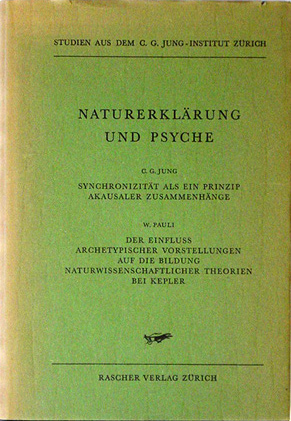 Published material
Published material
Pauli published only few articles dealing with philosophical problems and this state of affairs gives an entirely misleading impression of Pauli’s wide range of philosophical, psychological and historical interests. He was interested in those phenomena which elude the grasp of reason and in exploring the meaning of the scientific enterprise in general. Pauli took Jung’s ideas seriously. He did not share the prevalent cheap attitude “this is all nonsense”, but tried to understand. In spite of his critical stance, he was certainly not one of those “pretty reasoning minds which cannot endure any paradoxes”.
Pauli was a compulsive writer, seemingly unable to think without a pen in his hand. He never published his ideas as quickly as possible but preferred to communicate his thoughts in long letters to his friends and colleagues, trying out new ideas. The often colloquial and sometimes speculative style of his letters is in striking contrast to his cautious and refined publications. A considerable portion of Pauli’s unpublished writings were released for publication only within the last few years and this consists basically of his extremely rich personal correspondence – many thousands of letters – and a few manuscripts.
General aspects of the Jung-Pauli dialogue
Readers of C. G. Jung are more familiar with Wolfgang Pauli’s unconscious than with his waking life and achievement. Through Jung’s “Psychology and Alchemy” depth psychologists have known the Nobel laureate’s dreams, not his professional genius. Meanwhile, the scientists who continue Pauli’s pursuit of the nature and composition of the material universe know little of the quantum physicist’s depth exploration of his unconscious, his fascination with the interface of matter with psyche, and his collaboration with Jung in probing connections that appear to be acausal.
This collection of letters between Jung and Pauli offers insightful information about a relationship that was valuable for both analytical psychology and quantum physics, two realms of investigation that at first seem to have no point of contact. And how effective exchange between each other disciplines of the two scientists has really taken place, is clear from two separate positions resulting from their publications:
As the phenomenal world is an aggregate of the processes of atomic magnitude, it is naturally of the greatest importance to find out whether, and if so how, the photons (shall we say) enable us to gain a definite knowledge of the reality underlying the meditative energy processes. . . . Light and matter both behave like separate particles and also like waves. This . . . obliged us to abandon, on the plane of atomic magnitudes, a causal description of nature in the ordinary space-time system, and in its place to set up invisible fields of probability in multidimensional spaces.
[C.G. Jung]
Division and reduction of symmetry, this then the kernel of the brute! The former is an ancient attribute of the devil. . . . If only the two divine contenders—Christ and the devil—could notice that they have grown so much more symmetrical!
[W. Pauli]
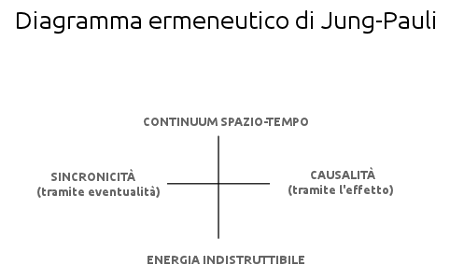 The psychology of the unconscious and modern quantum physics introduced independently new concepts in a remarkable and peculiarly coincident manner. The corresponding relations between the two fields formed the ore of the Jung-Pauli dialogue. Unlike most of his fellow-physicists, Pauli tried to interpret the scientific revolution – introduced by the relativity theory and quantum theory – not only from a philosophical perspective but also from a psychological one. And unlike most psychologists, Jung seriously looked for an objective basis that modern physics might provide for his model of the psyche. In 1953 Pauli wrote to Jung: “As physics strive after completeness, your analytical psychology longs for a home”.
The psychology of the unconscious and modern quantum physics introduced independently new concepts in a remarkable and peculiarly coincident manner. The corresponding relations between the two fields formed the ore of the Jung-Pauli dialogue. Unlike most of his fellow-physicists, Pauli tried to interpret the scientific revolution – introduced by the relativity theory and quantum theory – not only from a philosophical perspective but also from a psychological one. And unlike most psychologists, Jung seriously looked for an objective basis that modern physics might provide for his model of the psyche. In 1953 Pauli wrote to Jung: “As physics strive after completeness, your analytical psychology longs for a home”.
From a general point of view, the key-topic of the Jung-Pauli dialogue was the problem of psycho-physical relationships. From the viewpoint of the natural sciences, one might be tempted to speak of relationships between psyche and matter, across the Cartesiam cut between the two. Notwithstanding this common denominator, Pauli’s and Jung’s approaches were different in motivation and method. The articles they published together in the volume The Interpretation of Nature and the Psyche (Naturerklarung und Psyche – Jung and Pauli 1952) illustrate both their agreement and their differences pragmatically. Jung’s contribution to this work is entitled “Synchronicity: An acausal connecting principle”. For years Jung hesitated to publish his corresponding ideas; it was Pauli who encouraged him to write this teatise and the final version was the result of several revisions inspired by Pauli’s numerous comments.
Pauli’s interest in synchronicity was not purely theoretical: he was haunted by strange phenomena during his entire life. Pauli lived in a permanent state of tension with the technical world and he was notoriously clumsy with experimental tools. It is reported that his very presence in the vicinity of the laboratory was sufficient to cause the breakdown of experimental equipment in most inexplicable ways. Pauli’s sardonic humour and his sense for the burlesque permitted him to enjoy the countless anecdotes about this so-called Pauli effect.
Pauli’s contribution to the joint book investigated “The influence of archetypal ideas on the scientific theories of Kepler” . The goal of this study was to explore the role of unconscious in the development of science. Pauli intended to show how inner images initiate and guide the process of the formation of the scientific theory. As the archetypal image most relevant for Kepler’s work, Pauli found the religious symbol of trinity which operates as a central motivation and even explanation of a number of Kepler’s main ideas. For instance, Pauli ascribed Kepler’s evidence for the heiocentricity of the planetary system and for the three-dimensionality of space to a Trinitarian world view.
Notes on synchronicity
The definition of synchronicity, as developed by Jung in agreement with the comments and the positions of Pauli, is the following:
Two or more events seemingly accidental, but not necessarily simultaneously, are called synchronistic if the following conditions are met:
- Any presumption of a causal relationship between the events is absurd or even inconceivable;
- The events correspond with one another by a common meaning, often expressed symbolically;
- Each pair of synchronistic events contains an internally produced and an externally perceived component.
Particularly the last one of these criteria makes clear that synchronistic phenomena are psycho-physical phenomena, and that they are intractable by any science dealing with psyche or matter alone. The first criterion indicates a central principle of traditional science which has to be re-evaluated if synchronistic phenomena are to be studied: causality in the narrow sense of cause-and-effect relation. The second criterion suggests the concept of meaning as a constructive perspective into this direction. Since synchronistic phenomena are not necessarily simultaneous, synchronicity is a somewhat misleading term. For this reason Pauli preferred to speak of meaningful correspondences (Sinnkorrespondenzen) under the influence of an archetypal acausal ordering.
This is what Pauli wrote to Jung in 1949:
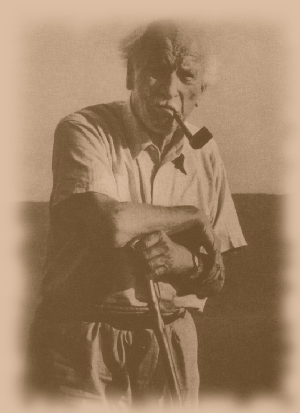 “The word sinchron seemed illogical … in a sense, unless you want to see a report with the term chronos that is substantially different from the concept of ordinary time … It is not clear, a priori, to understand why events that “express the presence of the same image and / or the same meaning” should be simultaneous: the concept of time is more difficult to me that the concept of sense”
“The word sinchron seemed illogical … in a sense, unless you want to see a report with the term chronos that is substantially different from the concept of ordinary time … It is not clear, a priori, to understand why events that “express the presence of the same image and / or the same meaning” should be simultaneous: the concept of time is more difficult to me that the concept of sense”
Pauli considered the Jungian synchronicity and the ancient idea of teleological finalism (in the general sense of a natural process oriented towards a higher end) as particular instances of such acausal order that can not be set intentionally. In agreement with this, the concept of the case (referred to seemingly random events) could also be interpreted in terms of meaningful correspondences.
The principle of synchronicity assumes that the indestructible energy has a dual relationship with the space-time continuum: on the one hand, there is the constant connection through the effect (causality) and on the other there is a fickle connection through the contingency, equivalence or sense, synchronicity.
Synchronistic events are erratic, sporadic and arbitrary because they are dependent on an archetypal situation enabled in the observer.
It is evident that the synchronicity, as understood by Jung, could not be defined in the usual sense of physical science since it only makes sense at the moment when an individual lives the experience and therefore not reproducible as such. It is one of those phenomena that flutter beyond the limits imposed by science. In the book published with Pauli, Jung presents an analogy of synchronicity through the ancient experience of the chinese I-Ching. Well, how could a so little scientific phenomenon interest and stimulate the mind of a scientist as Pauli? This is the synchronicity: when present, it is present, you can discuss it for long time and speculate on its structure, however, the manner of approach and study are exactly the same of modern quantum physics. And Pauli guessed that right away: a bridge between matter and psyche.
Synchronicity knocked down a fundamental physical principle: the principle of locality. This principle states that physical processes may not have immediate effect on the physical elements of reality at another location, separate from the one in which they occur. In practice, they cannot be “instantly” in remotely separated places. Instead, synchronicity represents a real phenomenon, non-local. According to Jung and Pauli, the phenomenon of synchronicity brought physics and psychology closer, showing a deep connection between the various events of the world, not tied to a direct causal-mechanical action.
Matter and Psyche: Two Aspects of the One Reality
Pauli and Jung agreed that matter and psyche should be understood as complementary aspects of the same reality, which is governed by common ordering principles: the archetypes. This implies that the archetypes are elements of a realm beyond matter and psyche.
In 1948 Pauli privately distributed to his friends an essay entitled “Modern Examples of Background Physics” in which he criticized the fact that physics, by definition, was excluding everything that had to do with judgments, feelings and emotions.
Alluding to the statement of Einstein about an alleged incompleteness of quantum mechanics, Pauli concluded: “However, this does not indicate the incompleteness of quantum theory in physics, but rather the incompleteness of physics in the totality of life”.
Pauli long insisted on the fact that in the future, scientists could no longer ignore the relationship between knowledge of the material world outside and the inner world of the psyche. It was necessary to recognize that the rational scientific approach was only a way to see and interpret the world; another approach – complementary to the previous – implied that subsequent research on the reality could no longer be conducted by separating matter and psyche, but that both sides were to enter into a process of joint research. In a perspective that includes human dignity and respect for nature, the ethical and religious could no longer be left aside as secondary aspects.


